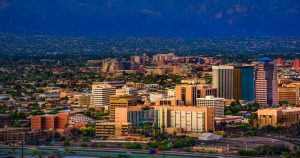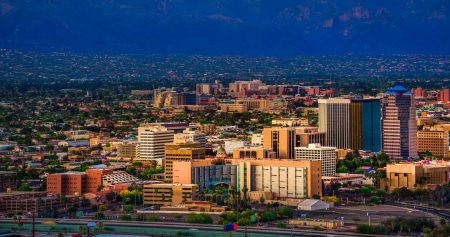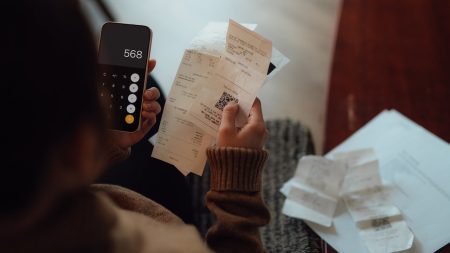Suppose you’re unexpectedly called into your boss’s office one day and given the tough news that you’re getting laid off. Panic sets in as you think about bills, rent and putting food on the table.
It’s a situation that many of us fear. Events such as job loss, medical emergencies and car repairs and more can happen to anyone, without warning or time to prepare. But there’s one hack that can give you some peace of mind in advance of these events: An emergency fund.
An emergency fund isn’t just about money — it’s about not having to worry constantly about possible setbacks, knowing you have a safety net to catch you if you stumble. Yet, according to Bankrate’s 2024 Annual Emergency Savings Report, only 44 percent of Americans could afford to cover an expense of $1,000 or more from their savings.
If you find yourself uncomfortable with your emergency savings or lacking an emergency fund altogether, here’s how to start an emergency fund to stave off financial worries.
An emergency fund is money in a bank account that’s set aside for unplanned expenses, such as medical bills, car repairs or home repairs. An emergency fund can also help you weather a loss of income from job loss or extended illness.
Serving as a financial cushion, an emergency fund helps you breathe easier, knowing you can handle life’s curveballs without going under. It also reduces the need to rely on high-interest credit cards or costly personal loans to pay for sudden expenses.
In its 2024 Annual Emergency Savings Report, Bankrate surveyed Americans regarding the state of their emergency savings, and found:
- If hit with an unplanned $1,000 expense, 44 percent of people would pay it with their savings, compared with 21 percent who would pay with a credit card, 16 percent who would pay it but have to cut other spending, 10 percent who would borrow from family or friends and 4 percent who would take a personal loan, as of December 2023.
- While a majority (55 percent) of adults have more savings than credit card debt, a significant amount (36 percent) still have more credit card debt, as of January 2024.
- Nearly a third (30 percent) of adults have more emergency savings than they did a year ago, but 32 percent have less than they did last year and 9 percent have none at all, as of January 2024.
- More than half (56 percent) of people have less than three months’ worth of savings in an emergency fund, as of May 2024.
- About 41 percent of people feel very or somewhat comfortable with their emergency savings.
An emergency fund is an essential part of a solid financial plan. It can help you pay unexpected expenses and avoid taking on more debt from high-interest credit cards or loans.
Not having enough emergency savings can also cause a sense of financial anxiety. Bankrate’s emergency savings survey found that:
- More than half (59 percent) of Americans are uncomfortable with their level of emergency savings.
- 27 percent of Americans wouldn’t be able to cover a months’ worth of expenses if they lost their job tomorrow.
The findings reaffirm the need for households to have a well-funded stash of cash and that it’s never too soon to start saving for an emergency.
By nature, unplanned expenses are unexpected, so the sooner you’re prepared the better off you’ll be when the inevitable happens.
— GREG MCBRIDE, CFA, BANKRATE CHIEF FINANCIAL ANALYST
Without an emergency fund, your only options may be credit cards, personal loans or asking relatives or friends for money.
An emergency fund should cover three to six months’ worth of expenses, but saving that amount takes time. To help get you started, begin with small goals, such as saving $5 a day. Then work your way up to a reserve to cover several months’ worth of expenses.
“It can feel like a mountain trying to build what feels like it should be a small thing for most people,” says Ryan Johnson, BFA, founder of Hundred Financial Planning. “The most important thing is making progress, even if it feels small to start. This can mean $50 a month for some people.”
Your ultimate savings goal will depend on your income and expenses. Focus on having enough to cover expenses, not on replacing your entire income. Essential monthly expenses commonly include housing, utilities, transportation, food, and credit card or loan payments.
To determine how much you need to save, add up your total costs per month, and then multiply that total by however many months’ worth of expenses you wish to have on hand.
Sole breadwinners, business owners or those with variable incomes should aim for nine to 12 months’ worth of expenses in an emergency fund, to account for the higher volatility in their income.
The best place to keep your emergency fund is in a high-yield savings account, which offers easy access and pays a competitive yield. Look for banks and credit unions that insure deposits through the Federal Deposit Insurance Corp. (FDIC) or the National Credit Union Administration (NCUA).
Online-only banks are good options for an emergency savings account because they typically offer higher yields and charge lower fees than brick-and-mortar banks. Fees can eat into your emergency fund balance, which makes comparing savings rates and account features key.
Also, there’s no need to stick with an account just because you’ve had it a while. Consumers keep their savings accounts for an average of nearly 17 years, according to a January 2022 Bankrate survey, but if the current account charges monthly fees or pays a subpar annual percentage yield (APY), it’s worth some inconvenience to find a new account that offers better terms.
Bankrate’s take: Consider keeping your emergency fund in an online savings account, which typically pays more interest and comes with fewer fees.

1. Make a budget and see where you can start saving more money
To find ways to save, you first have to understand where and how you spend. Budgeting helps you distribute your income more efficiently and find ways to reduce or manage your spending. Bankrate’s Home Budget Calculator can help you to set a budget.
A budgeting app is another useful tool that can help you calculate income and expenses to provide a dashboard view of your financial situation. Once you have an overview of your spending, you can get an idea of how much money you’ll have to save each week or month after putting money away for expenses. Use that extra as a starting point for savings goals.
2. Determine your emergency fund goal
Most experts recommend that you save three to six months’ worth of expenses to build out your emergency savings. However, the exact amount you need should be the amount that you’re comfortable with if an unexpected expense, such as medical bills or car repairs, should arise.
To find your number, you’ll need to look back at the budget you created for your monthly expenses. Then, multiply that number by six to get your six-month emergency fund goal. For most households, it will take some time to save up this amount of money.
For example, the average household spends $77,280 per year in living expenses, according to a 2023 study by the U.S. Bureau of Labor Statistics. That amount breaks down to $6,440 per month. For an emergency fund, a household that spends this much should save between $19,320 and $38,640. Your number may be above or below this range, depending on your budget.
3. Set up a direct deposit
Direct deposit automatically deposits your paycheck and other funds directly into your checking or savings account. This eliminates the need to manually deposit checks. But all your funds don’t have to go into one account.
Setting up a split direct deposit allows you to direct a specific amount of money to your emergency fund with the remainder going to your checking account or vice versa. You can also use savings apps that can automatically transfer a percentage of your paycheck into a savings account.
Automating the process not only simplifies saving, it can also help keep you on track toward your savings goals. If that money is automatically routed to a separate account, there’s less temptation to spend it.
4. Gradually increase your savings
One way you can boost your savings rate over time is to increase the amount you’re contributing to your emergency fund by 1 percent or a specific sum, until you’ve reached your savings goal. Increasing the amount in increments can help to make the larger deposit to your savings account appear less noticeable.
For reference, the average personal savings rate in the U.S. is 4.6 percent, as of September 2024, according to the Bureau of Economic Analysis. You can use small increments to help you reach this savings rate or go higher over time.
“The best way to build up emergency fund savings when cash flow is tight is to take tiny steps that add up over time,” says Noah Damsky, a chartered financial analyst and founder of Marina Wealth Advisors. “If you want to save $150 per month, save $5 per day. Not only is it less daunting, but it helps you realize how you can reach your goals by making small sacrifices,” he adds.
5. Save unexpected income
Unexpected money can come in the form of a tax refund, bonus, cash gift, inheritance, or winning a contest or the lottery.
These financial windfalls can be a great boon for your emergency fund account, and you should allot at least part of the unexpected income to savings. You’ll want to do so before you start spending the money since you can easily overspend and end up with less savings than you intended.
6. Keep saving after reaching your goal
The more you can add to your emergency savings, the longer you’ll be able to stay afloat if you end up out of work due to a job loss or illness. Some emergencies require more than a six-month cushion. Being unemployed for more than a year or being hospitalized for several months are both situations where you’ll be glad you have more money saved in your emergency fund.
You’ll also want to think about large, unexpected expenses that could cost more, such as a large house repair common to homes in your area or buying a new or used car. You can work to save up for these emergencies in addition to covering a few months’ worth of living expenses.
7. Use bank account bonuses and interest to jumpstart your savings
Finally, you can use a bonus from opening a new bank account to stash money away into emergency savings. Banks frequently offer cash incentives to new customers for opening new checking or savings accounts. Currently, banks are offering bonuses up to $3,000 for opening a new checking or savings account, or to those who refer a friend or family member.
In addition to looking for a bank account bonus, you can increase your bank account balance by making sure you’re getting the best return on your money. The best savings rates can often be found at online banks, which don’t have the overhead costs of maintaining branches.
Then, consider keeping your savings in multiple accounts designated for specific purposes to help you stay on track to meet your emergency fund goals. Consider housing your emergency fund in a separate account from a vacation fund, for instance. This may help prevent you from tapping into emergency savings for other purposes.
Bottom line
Starting and keeping an emergency fund is crucial for financial stability and peace of mind. It can help cover unexpected expenses and prevent the need for high-interest credit cards or loans.
Aim to save three to six months’ worth of living expenses and consider automating your savings through direct deposit or savings apps. Start small and make it a priority to build your emergency fund, as it can make all the difference in times of financial uncertainty.
-
How quickly you should fully fund your emergency savings depends on how much you’re able to save each month. Many consumers need to balance saving money and paying down debt. One way you can increase the amount you save is by taking a close look at your spending and identifying areas that can be trimmed, such as entertainment or dining out.
-
Once you’ve created a budget, you’ll be able to set realistic monthly savings goals. Even putting away as little as $10 to $100 a month can add up over time.
-
The best place for your emergency fund is a liquid savings account, where you’ll be able to access the money quickly, if needed. An example is a high yield savings account.
— Bankrate’s René Bennett and Matthew Goldberg also contributed to this story.
Read the full article here












